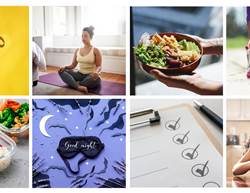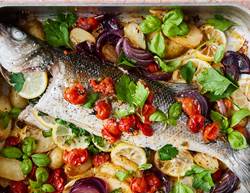"Even if it doesn't work, at least I'll eat more vegetables, which is good for overall health," I thought. I decided to start by including at least one plant-based food in each meal for a month to see what happened.
When I told my husband, Ken, about my plan, he was happy to support me but confused. “Are you going to have to eat only vegetables for a whole month?” he asked. “You really need to keep to a balanced diet, I think.”
“No need to worry,” I replied. “It’s just that I'm going to have at least one happy-making veggie course with each meal.”
While just about any veggie (or combination of veggies) would probably do, I decided I might as well focus on those that have some mood-related research to back them up. At the top of my list to load up on: folate-rich vegetables like dark leafy greens (including kale), bok choy and broccoli. Folate is a B-series vitamin, which aids in serotonin production. In fact, research has suggested many people with depression are folate deficient. Other solid sources include capsicum (red and green, a veritable Christmas of crunchy deliciousness) and black-eyed peas.
I also resolved to eat more beans. While technically a fruit, beans are rich in magnesium, a mineral that also seems to play an important role in keeping depression and anxiety at bay. I added tomatoes to my list, too; at least one study found that eating a lot of them reduces reports of depression by almost 50%.
Ken and I both love most plant foods, so I figured it wouldn't be too hard to keep to the regimen. But I hit my first hurdle with the Most Important Meal of the Day, because I wasn't used to eating vegetables with breakfast. Fortunately, I spent my childhood in a Native American/Hispanic family, where the bean pot was always simmering. Even today, the aroma of cooking beans reminds me of home. So I decided to create my own comfort food breakfast: beans and eggs on a tortilla.
Instead of using canned beans, which tend to be high in sodium, I cooked up my own little pot of pinto beans and stored them in an airtight container in the refrigerator. Each morning I scooped a cup of beans into a pan, heated them up and served them with my eggs. Not surprisingly, my hubby declined to break his fast with pinto beans—he’s of Polish heritage and would never consider eating beans for breakfast!
Lunch was simpler. Although a typical lunch for me used to be a sandwich with a side of chips, I easily made the swap to salads. (Get ahead of the game and prep one of these high-protein salads this weekend to pack for lunch all week.) What wasn’t so easy was determining which bag of salad I would munch on. The local organic food store had at least two dozen varieties, including kale and nuts, kale and mixed greens, mixed greens and dried berries, spinach in both adult and infant form, and the like. I realised I enjoyed most of them, provided I added in a little protein.
Dinner didn't require any major changes, since we were already used to eating some sort of vegetable with our evening meal.
The biggest challenge I faced—perhaps not surprisingly—was how to get my veggies on-the-go. During the month of my experiment I had two back-to-back conferences to attend, which meant a lot of time in transit. While healthy salad options are available everywhere these days (including airports), that wouldn't work for breakfast.
Away from home with no bean-and-egg tortilla in sight, my usual breakfast plan went out the window. Sure, I could have ordered a veggie omelet at the hotels I stayed in, but I really don't like veggie omelets. Determined not to give up, I ended up finding nearby stores that sold pre-cut veggies, like carrots and celery. So I just chomped on a few before meeting colleagues for breakfast. Problem solved!
It’s been a month now, and I do have to say that I’m feeling pretty good about deciding to include a vegetable with each and every meal. I feel that I’m being a bit more mindful about what I put in my mouth, and my digestive system has benefited from the increased fibre intake. Not to mention, I’m increasingly consuming foods with high nutritive value. But do I feel a new spring in my step, a reduced tendency to snap at folks for no apparent reason, a renewed joie de vivre?
Well, not so much. I suspect that supplements containing higher concentrations of magnesium and folate might be more effective if your goal is to get a bigger mood boost. (Check with your doctor first, of course.) But I did notice that going through airport security wasn’t nearly as grueling as it once was, and I maintained a good attitude—and even cracked a few innocuous jokes with Customs —during screening. Was it the veggie intake? I’m planning to keep up this habit, so maybe I'll know in a couple more months.










